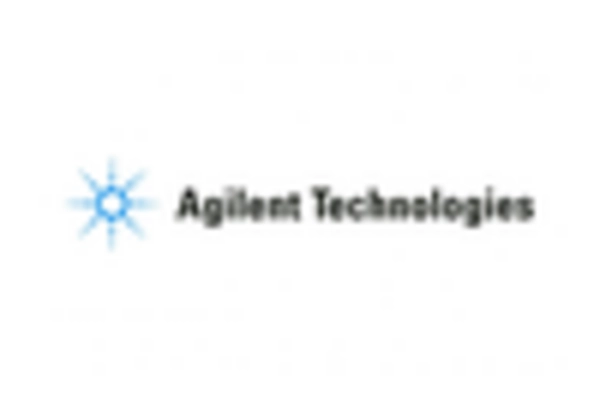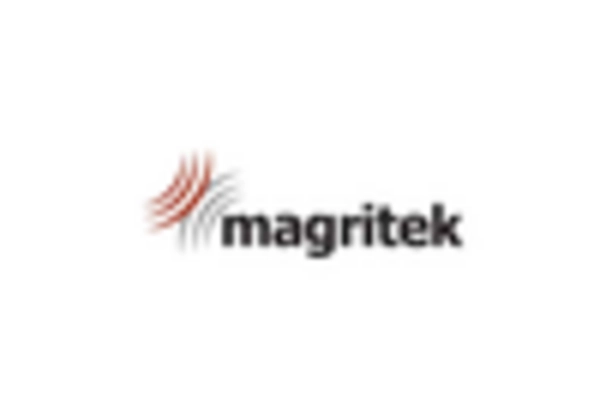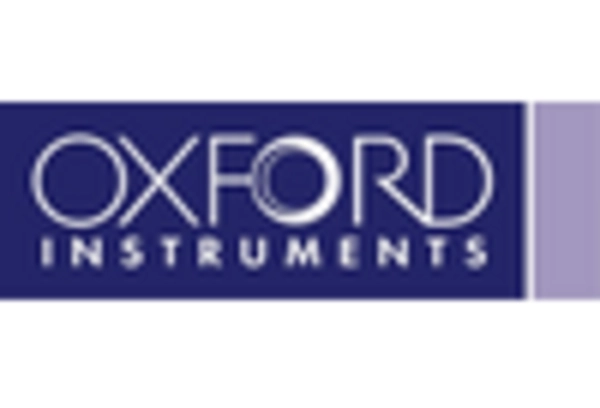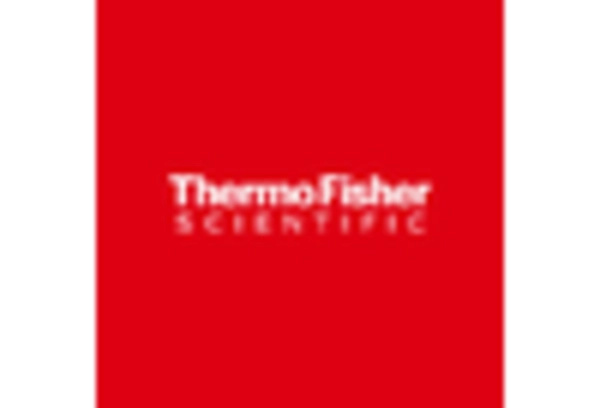Growing Pharmaceutical Sector
The pharmaceutical sector in the GCC is expanding rapidly, which is significantly impacting the nuclear magnetic-resonance-spectroscopy market. As pharmaceutical companies increasingly rely on NMR for drug discovery and development, the demand for NMR systems is likely to rise. The market for pharmaceuticals in the GCC is expected to reach $30 billion by 2026, with NMR playing a crucial role in ensuring the quality and efficacy of new drugs. This growth is driven by the need for precise analytical techniques to support complex formulations and regulatory compliance. Consequently, the nuclear magnetic-resonance-spectroscopy market is poised to benefit from this upward trend, as pharmaceutical companies seek advanced NMR solutions to enhance their research capabilities.
Increased Focus on Environmental Testing
There is a growing emphasis on environmental testing within the GCC, which is positively influencing the nuclear magnetic-resonance-spectroscopy market. NMR is increasingly utilized for analyzing pollutants and contaminants in water, soil, and air, providing accurate and reliable data for environmental assessments. As governments and organizations prioritize sustainability and environmental protection, the demand for NMR technology in environmental monitoring is expected to rise. This trend is likely to drive investments in NMR systems, as they offer non-destructive testing capabilities and high sensitivity. The nuclear magnetic-resonance-spectroscopy market is thus positioned to expand, catering to the needs of environmental agencies and research institutions focused on ecological preservation.
Technological Advancements in Spectroscopy
The nuclear magnetic-resonance-spectroscopy market is experiencing a surge in technological advancements, which are enhancing the capabilities and applications of NMR systems. Innovations such as high-field magnets and advanced software algorithms are improving resolution and sensitivity, making NMR more accessible for various applications. In the GCC region, the integration of automation and artificial intelligence in NMR systems is expected to drive market growth, as these technologies facilitate faster and more accurate analyses. The market is projected to grow at a CAGR of approximately 7% from 2025 to 2030, indicating a robust demand for advanced NMR solutions. This trend suggests that as technology continues to evolve, the nuclear magnetic-resonance-spectroscopy market will likely expand, attracting investments and fostering research initiatives across multiple sectors.
Expansion of Academic and Research Institutions
The expansion of academic and research institutions in the GCC is contributing to the growth of the nuclear magnetic-resonance-spectroscopy market. As universities and research centers invest in advanced NMR facilities, the demand for high-performance NMR systems is expected to increase. This trend is indicative of a broader commitment to scientific research and innovation within the region. The establishment of specialized research programs focusing on chemistry, biology, and materials science is likely to drive the adoption of NMR technology. Furthermore, collaborations between academia and industry are anticipated to foster advancements in NMR applications, thereby enhancing the nuclear magnetic-resonance-spectroscopy market's potential for growth.
Rising Demand for Quality Control in Food Industry
The food industry in the GCC is witnessing a heightened demand for quality control measures, which is benefiting the nuclear magnetic-resonance-spectroscopy market. NMR technology is increasingly employed for food safety testing, including the detection of adulterants and the verification of product authenticity. As consumers become more health-conscious and regulatory standards tighten, food manufacturers are turning to NMR for its ability to provide rapid and accurate analysis. The market for food safety testing is projected to grow significantly, with NMR playing a pivotal role in ensuring compliance with safety regulations. This trend indicates that the nuclear magnetic-resonance-spectroscopy market will likely see increased adoption in the food sector, driven by the need for reliable quality assurance.

















Leave a Comment